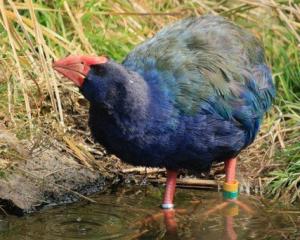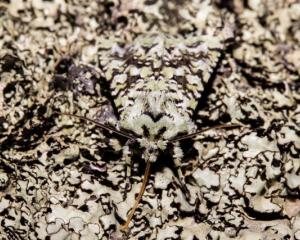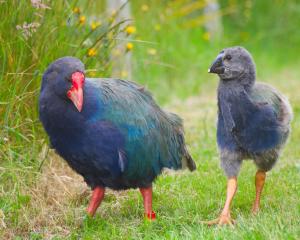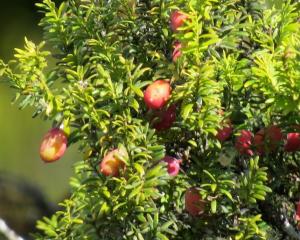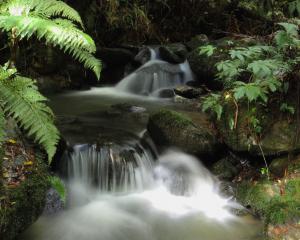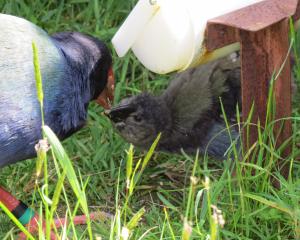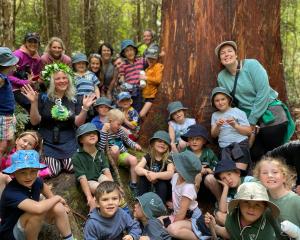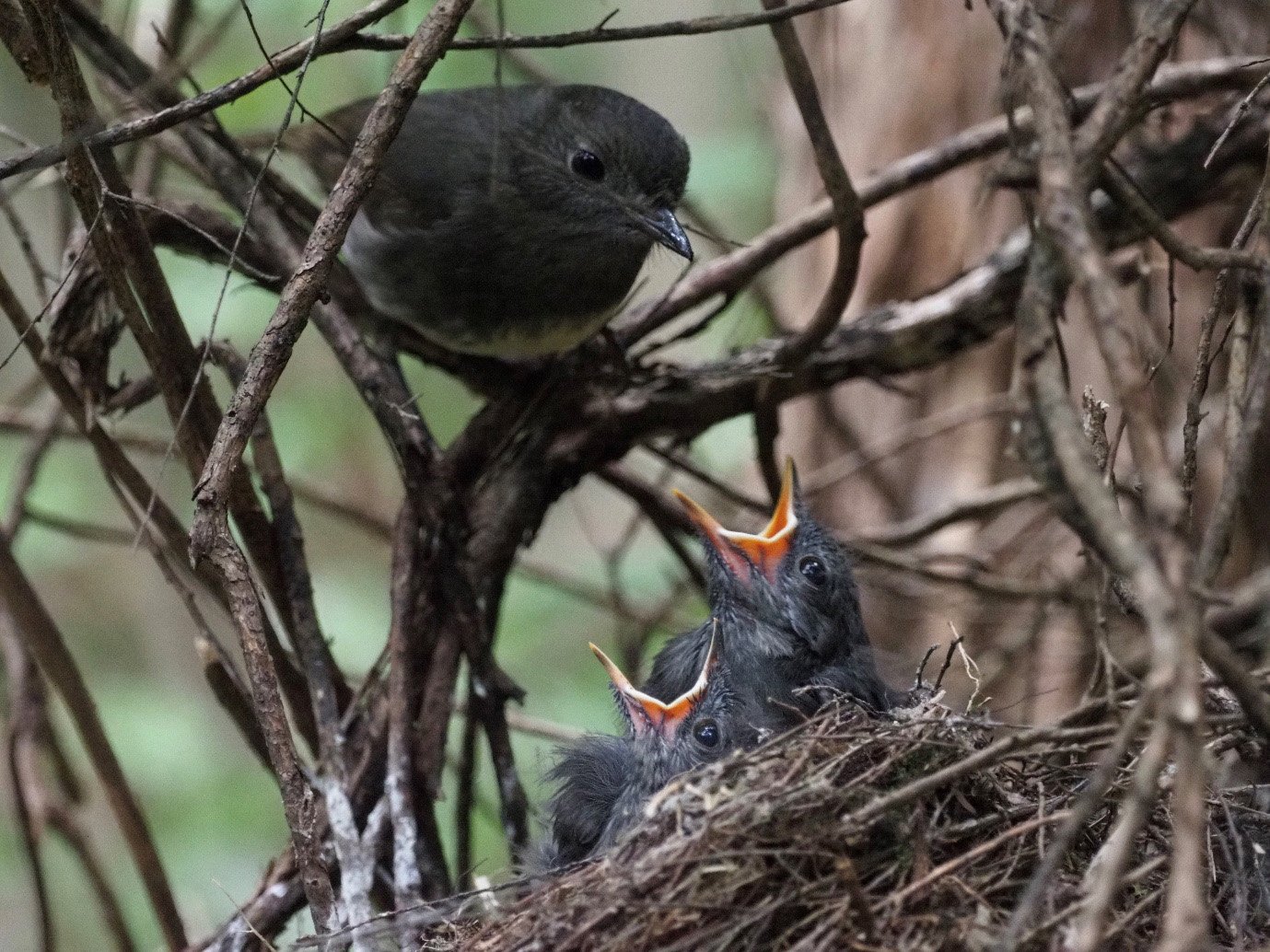

Kakaruai are native birds more usually seen in forest in the more remote parts of New Zealand. Similar in size to a house sparrow, with dark to mid-grey feathers on their back and wings, and a cream-coloured front, they come across as friendly and trusting as they hop along the forest floor to nab any bugs disturbed by trampers’ feet — and may come very close to people as a result. Like much of New Zealand’s wildlife, robins are vulnerable to introduced predators such as rats and stoats that prey on eggs, nestlings and adult birds alike. This, coupled with deforestation, has resulted in a conservation status of "declining". In particular, very few populations of kakaruai remain along the east coast of the South Island.
However, Dunedin was fortunate in that a small number of robins persisted in the Silver Peaks and Silverstream forests. In 2010 and 2011, work by the late Prof Ian Jamieson from the University of Otago and others led to 45 of these robins being translocated into Orokonui Ecosanctuary. The population flourished there in the absence of introduced predators. By 2016, juvenile birds had begun to disperse out past the safety of the predator exclusion fence and there have since been sightings from Doctors Point to near Port Chalmers, with evidence for populations starting to establish. But how well are these small birds managing to survive outside of the fence?
Since 2016, Otago members of Birds New Zealand have been monitoring robins in about 50ha of a privately-owned mixed forest block outside of the Ecosanctuary with the goal of determining whether robins outside of the fence are establishing a self-sustaining population — that is, surviving to breed successfully and the young recruiting back into the population. Each year, between August and December, more than 20 keen volunteers have located robin territories and nests, and also banded birds with unique colour combinations so they can tell individuals apart and monitor their survival from year to year.
As one such volunteer explained: "Nest finding isn’t exactly a walk in the park — it’s more like a bush bash ... and a walk around in circles. And it involves bribery!". Nest finding starts by visiting the territory of a pair of robins and clapping until a robin (usually the male of the pair) appears. Then the bribery begins — with mealworms, which are food treats for robins. Mealworms are left on an open area of ground with the hope the robin will eventually hold a few in his beak and fly off with them to feed to his mate or nestlings at a nest, thereby leading us to its nest.
The robin is followed through thick and thin. This journey often results in losing sight of the robin several times, having to throw further mealworms, and being misled when the bird stashes their mealworms to eat later — nowhere near the nest. Therefore, finally discovering a robin’s nest is a very satisfying experience. Robins build open-cup nests and we have found them anywhere from in a tangle of shrubby vegetation near the ground, to forks in tree trunks or the tops of trees such as macrocarpa and kānuka. Robins usually lay two or three eggs, which take an average of 18 days to hatch and then a further 21 days for the nestlings to fledge and leave the nest. The nests are visited regularly by the Birds NZ volunteers during this time to collect information on nesting success. In recent years, the nest monitoring has been helped by the Halo Project and Otago Regional Council loaning cameras to place near the more accessible nests.
It is now early February 2024 and the current monitoring season is almost over, with one more season to go before the end of the project. What have we found out so far? Numbers of robins at the study site have increased from four birds in 2016 to more than 30 territories (either held by pairs or by single males) in 2023. Nest success rates have varied: they were very low between 2017-2019, with only three out of 14 nests fledging young, much higher in 2020 and 2021, with 13 of 19 nests fledging successfully, low again in 2022, but improved in 2023. It has proved difficult to ascertain most of the causes of nest failure, although predation is the likely cause and there is some evidence of predation by rats. There are also promising signs that the population can be self-sustaining, as there is evidence from banding that birds which have fledged from the site survive to breed there the following year and, in turn, fledge their own young. What about adult survival from year to year? Only six out of 20 banded adult robins present at the site between 2019-2022 were seen in the most recent 2023-24 breeding season, suggesting survival rates of adult birds between years may not be high.
What does all this mean? Although the number of nests and robins monitored each year is not large, if they are representative of the wider robin population outside the ecosanctuary, it suggests the population has the ability to breed very successfully in some years, and for the young to recruit back into the population. However, there are also indications that in some years, nest and adult survival of robins outside the fence are not high. This highlights the importance for now of the continuing success of robins inside the ecosanctuary — as an ongoing source of birds to disperse into areas outside the fence. Also essential are the mammalian predator control efforts of landowners and organisations such as Predator Free Dunedin, The Halo Project and City Sanctuary in the wider area around the ecosanctuary.
With robin populations able to breed successfully and predator control initiatives taking hold across the city, the future of robins in and around Dunedin is promising. So, next time you are walking through the bush or the town belt, keep an eye — and ear — out for robins — you never know where they might pop up next!
Note: The Birds NZ study in this article operates under a Wildlife Act Authority and certification from the New Zealand National Bird Banding Scheme. For more information about Birds NZ or the robin monitoring project, please email: birds.otago@birdsnz.org.nz.
Georgina Pickerell is a long-time member of Birds NZ, has been fortunate enough to spend a lot of time observing kakaruai, and has co-ordinated the Outside Orokonui monitoring project for Birds NZ since 2017. Myrene Otis is a Birds NZ member and volunteered on the project while completing a master’s degree in the University of Otago’s zoology department.


